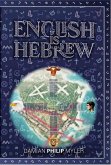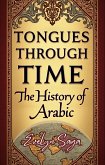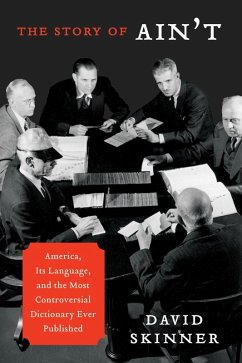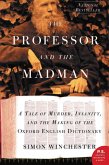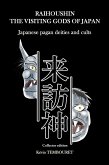The Nihon shoki (also known as The Chronicles of Japan) is one of the most important texts in the early corpus of Japanese literature and historiography. Completed in 720 CE under the supervision of Prince Toneri and compiled by an unknown committee of a number of native and continental scribes, Nihon shoki is the second-oldest extant Japanese historical text after Kojiki (712). Yet it is far more comprehensive, systematic, and politically ambitious. It offers an expansive and structured narrative of the origin of the Japanese archipelago, the divine ancestry of the imperial family, and the reigns of kings (labeled tenno or divine sovereigns) from mythical antiquity to 697. Its thirty books or chapters provide a sweeping account of cosmology, politics, diplomacy, military campaigns, court customs, and inter-regional relations, particularly with China, and the kingdoms of the Korean peninsula (Paekche, Silla, Koguryo, and Kara).
A particularly complex and revealing aspect of the Nihon shoki is its incorporation of foreign-especially Korean-sources. The text quotes or paraphrases material from three Paekche histories: the Paekcheki "Record of Paekche," Paekche sinch'an "New Selections of Paekche," and Paekche pon'gi "Annals of Paekche." Although these texts are now lost, their inclusion in Nihon shoki offers a rare and invaluable glimpse into early Japan-peninsular relations, Paekche historiography, and the processes by which Japanese court scribes compiled historical records. For modern historians, these citations are a mixed blessing: on the one hand, they preserve fragments of lost Korean traditions; on the other, they raise questions about authenticity, selective editing, and ideological manipulation by the Japanese compilers.
Linguistically, the Nihon shoki is a fascinating artifact. Its use of literary Sinitic (kanbun) makes the text syntactically Chinese. Yet, the text often encodes Japanese readings and local names that must be interpreted in the context of Old Japanese phonology. The hybrid nature of the text reveals the transitional linguistic environment of the Asuka and early Nara periods, during which Japan was developing its own written traditions while still relying heavily on Chinese language and models. The text also preserves many archaic terms and grammatical constructions that have since disappeared from both Japanese and Korean, making it an essential source for historical linguists studying the evolution of language in East Asia.
Finally, the legacy of the Nihon shoki has been profound. Throughout the centuries, it has been read, copied, annotated, and interpreted by court historians, Buddhist monks, Confucian scholars, nationalist ideologues, and modern academics. In the Edo period, scholars such as Motoori Norinaga and Arai Hakuseki debated its meaning and authenticity, often comparing it to the more literary Kojiki and Chinese historical models. Modern scholars now approach the Nihon shoki with a mix of respect and skepticism. While it cannot be read as a transparent record of historical fact, it remains an indispensable source for understanding how early Japanese elites viewed their world and its cosmology, constructed their identities, and engaged with their neighbors. It is as much a text about what the past should be as it is a record of what happened. The text offers insight into the processes of cultural adaptation, historical memory, and ideological construction in ancient Japan. Therefore, Nihon shoki is both a mirror and a map-reflecting the ambitions of the Yamato court and guiding future generations in their understanding of Japanese origins. In sum, Nihon shoki is not merely a historical document; it is a foundational work of Japanese civilization.
A particularly complex and revealing aspect of the Nihon shoki is its incorporation of foreign-especially Korean-sources. The text quotes or paraphrases material from three Paekche histories: the Paekcheki "Record of Paekche," Paekche sinch'an "New Selections of Paekche," and Paekche pon'gi "Annals of Paekche." Although these texts are now lost, their inclusion in Nihon shoki offers a rare and invaluable glimpse into early Japan-peninsular relations, Paekche historiography, and the processes by which Japanese court scribes compiled historical records. For modern historians, these citations are a mixed blessing: on the one hand, they preserve fragments of lost Korean traditions; on the other, they raise questions about authenticity, selective editing, and ideological manipulation by the Japanese compilers.
Linguistically, the Nihon shoki is a fascinating artifact. Its use of literary Sinitic (kanbun) makes the text syntactically Chinese. Yet, the text often encodes Japanese readings and local names that must be interpreted in the context of Old Japanese phonology. The hybrid nature of the text reveals the transitional linguistic environment of the Asuka and early Nara periods, during which Japan was developing its own written traditions while still relying heavily on Chinese language and models. The text also preserves many archaic terms and grammatical constructions that have since disappeared from both Japanese and Korean, making it an essential source for historical linguists studying the evolution of language in East Asia.
Finally, the legacy of the Nihon shoki has been profound. Throughout the centuries, it has been read, copied, annotated, and interpreted by court historians, Buddhist monks, Confucian scholars, nationalist ideologues, and modern academics. In the Edo period, scholars such as Motoori Norinaga and Arai Hakuseki debated its meaning and authenticity, often comparing it to the more literary Kojiki and Chinese historical models. Modern scholars now approach the Nihon shoki with a mix of respect and skepticism. While it cannot be read as a transparent record of historical fact, it remains an indispensable source for understanding how early Japanese elites viewed their world and its cosmology, constructed their identities, and engaged with their neighbors. It is as much a text about what the past should be as it is a record of what happened. The text offers insight into the processes of cultural adaptation, historical memory, and ideological construction in ancient Japan. Therefore, Nihon shoki is both a mirror and a map-reflecting the ambitions of the Yamato court and guiding future generations in their understanding of Japanese origins. In sum, Nihon shoki is not merely a historical document; it is a foundational work of Japanese civilization.
Dieser Download kann aus rechtlichen Gründen nur mit Rechnungsadresse in A, D ausgeliefert werden.



